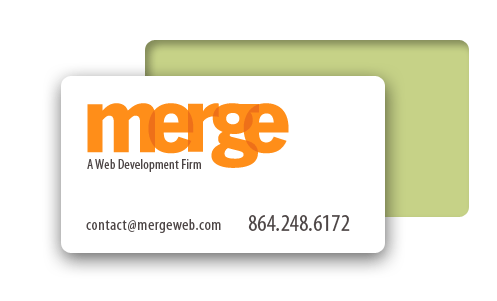Merge has been on a mission for seven months to find great space in downtown Greenville. Know of available cool space? Contact me.
Here’s the adventure so far:
Great space in the West End #1: Space needed $30,000+ of work just to get it white-shelled and ready to move in. The landlord, and I quote, “…haven’t paid anyone anything, and I’m not going to start now.” So little ol’ Merge is going to invest $30,000 in your building so we can merely move in (this didn’t include our upfit)? We’ll pass.
Building #2. A great space in the West End. You’d know the building by name. The landlords were extremely professional and wanted to get the space leased. Problem: Two huge HVAC units that protruded into our space, requiring yelling just to be heard and the units literally shook the windows. Merge hems and haws but passes.
Building #3. 3,400 sq ft. of sure bliss at a great rate. Problem: The Landlord wants only a one-sided deal (fully in his favor of course). As the deal falls apart he says, “Some friends call me old fashion [sic]. Blessings to all.” Note: His space has set empty for 8 months and I find out that several other deals have preceded ours and fallen through as well. Merge walks (or we’re forced to walk).
I’ve been on commercial real estate crash course for the past several months. I’m learning the hard way. It’s not like a normal customer relationship. So far the landlords I’ve dealt with wants their cake and they want to eat it too. I guess that’s why they’re called Land Lords?
Negotiation, as I understand it is a method used to get to a win / win for both parties. Party A wants something and Party B wants their own thing. In proper negotiations, both parties can typically get what they want. Both parties can end up being happy. Scenario 1 and Scenario 3 above, there wasn’t a negotiation. It was “the old fashioned way” of negotiation where somebody wins and somebody loses. “You want what I have, and this is the deal.” Their tactic of negotiation instead was, “my way or the highway.”
When you’re putting a deal together, understand what the other party wants. For building #3, I simply wanted a renewal option (pretty common in commercial leases) and I didn’t want to be responsible for code issues before I moved in (which he required I assume in the lease). This requirement of him is quite abnormal. What I wanted wasn’t out of line. But the landlord never asked what I wanted. He told me what he wanted and said take it or leave it (his idea was he wins, I lose…sucker).
I would have given it to him too, if he would have understood and met my wants. I’m sure he would have been willing to do so if he would have asked. Now where is he? It’s going to take him several more months in the meantime to lease the space (at a minimum). His “old fashion(ed) ways” will cost him about $40K over the past twelve months or so. Ouch.
Merge on the other hand still needs office space. A mere inconvenience at this point. In the meantime, we’re seeking landlords who are interested in a win/win relationship. Any takers?
